Home> Company News> Maximizing Engine Efficiency with Accurate Valve Adjustment
- AddressNorth Tan Street, Jinan,Shandong
- Factory Address123 Ubi Ave 3 #12-30 Frontier Singapore 408867
- Worktime9:00-18:00(Beijing time)
- Phone(Working Time)86 0531-8299 9952
Valve adjustment is a crucial maintenance process that ensures optimal engine efficiency by controlling the flow of gases into and out of the engine. Proper valve adjustment helps to prevent engine damage, improves performance, and extends the engine's lifespan. This paper aims to explore the importance of valve adjustment for maximizing engine efficiency, and to provide a comprehensive overview of valve adjustment techniques, common issues, and solutions.Valves play a critical role in engine operation by allowing fuel and air to enter the engine and exhaust gases to exit. Valve adjustment ensures that the valves open and close at the correct times and to the correct extent, allowing the engine to run smoothly and efficiently. A poorly adjusted valve can cause a range of problems, including reduced power output, increased fuel consumption, and engine damage.
The purpose of this paper is to provide an overview of valve adjustment, including its function and components, different types of valve adjustment techniques, the importance of proper valve adjustment for engine efficiency, common issues and solutions, and the future outlook for valve adjustment technology and applications. By understanding these concepts, engine operators and technicians can maximize engine efficiency, reduce downtime, and minimize repair costs.

Understanding Valve Adjustment
Valve adjustment is an important aspect of engine maintenance that involves adjusting the clearance between the valve stem and the rocker arm, which allows the valve to open and close properly during engine operation. The valve system is an integral component of the engine that controls the flow of fuel and air into the combustion chamber and the exhaust out of the engine. Valves are typically made of steel or other alloys and are operated by a camshaft, which rotates to open and close the valves in synchronization with the engine's piston movements.
There are different types of valves used in engine systems, including intake valves, exhaust valves, and fuel injection valves. Each valve has a specific role in controlling the engine's performance and efficiency. For example, the intake valve controls the flow of air and fuel into the combustion chamber, while the exhaust valve controls the flow of exhaust gases out of the engine.
The valve system also includes other components such as valve springs, retainers, and pushrods, which work together to ensure the valves operate smoothly and efficiently. The valve spring, for instance, keeps the valve closed when the camshaft is not pushing on it. The pushrod connects the camshaft to the rocker arm, which opens and closes the valve.
Valve adjustment is crucial for ensuring the valve system operates correctly and efficiently. If the valve clearance is too small or too large, the valve may not open or close fully, leading to poor engine performance, reduced fuel efficiency, and increased engine wear. Therefore, it is essential to understand the function and components of valves and the importance of proper valve adjustment for engine efficiency.
Importance of Proper Valve Adjustment for Engine Efficiency
Proper valve adjustment is essential for maximizing engine efficiency. Valves are responsible for controlling the flow of air and fuel into the engine cylinders, as well as the exhaust gases out of the engine. If the valves are not adjusted properly, the engine's performance will suffer.
One of the benefits of proper valve adjustment is improved fuel efficiency. When valves are adjusted correctly, the engine can burn fuel more efficiently, resulting in better fuel economy. Additionally, proper valve adjustment can lead to improved engine performance and power output. This is because valves that are correctly adjusted allow for optimal air and fuel flow into the engine cylinders, resulting in better combustion and power output.
Conversely, if the valves are not adjusted properly, the engine's performance and fuel efficiency will suffer. This can result in reduced power output, decreased fuel economy, and increased emissions. In addition, improperly adjusted valves can cause damage to the engine, including wear and tear on the valve train components.
The effects of different types of wear on valves can also impact engine efficiency. For example, if the valve clearance becomes too large due to wear, the valve may not close properly, causing a loss of compression and power. On the other hand, if the valve clearance becomes too small due to wear, the valve may not open fully, resulting in a loss of power and increased exhaust emissions.
Proper valve adjustment can help prevent these issues and ensure optimal engine performance and efficiency. It is important for engine owners and operators to understand the importance of valve adjustment and to schedule regular maintenance and inspection to ensure proper valve function.
Types of Valve Adjustment
Valve adjustment is the process of adjusting the clearance between the valve stem and rocker arm or cam follower in an internal combustion engine. Proper valve adjustment is critical for ensuring the engine runs at peak efficiency and maximum power output.
There are three main types of valve adjustment techniques:
-
Manual Valve Adjustment: Manual valve adjustment is a process where the clearance between the valve stem and rocker arm is adjusted using a feeler gauge. This method involves adjusting each valve individually, which can be a time-consuming process. However, it is still widely used in older engines or in engines with non-hydraulic lifters.
-
Hydraulic Valve Adjustment: Hydraulic valve adjustment is a more modern technique that is used in most modern engines. This method uses hydraulic lifters to automatically adjust the clearance between the valve stem and rocker arm. The hydraulic lifter contains a small piston that moves in response to changes in oil pressure. This movement ensures that the correct valve clearance is maintained at all times.
-
Electronic Valve Adjustment: Electronic valve adjustment is the newest and most advanced valve adjustment technique. This method uses electronic actuators to control the valve lift and timing. Electronic valve adjustment can be found in engines with variable valve timing (VVT) and is becoming increasingly common in modern engines. Electronic valve adjustment is more precise and can help to improve engine performance and fuel efficiency. However, it requires more complex control systems and is typically more expensive to repair if something goes wrong.
Implementing Proper Valve Adjustment
Proper valve adjustment is essential for ensuring optimal engine efficiency, and it is important to follow the correct procedure when implementing valve adjustment. In this section, we will discuss the steps involved in implementing proper valve adjustment and the different valve adjustment techniques that can be used.
Steps Involved in Implementing Proper Valve Adjustment
-
Determine the correct valve clearance: Before starting the valve adjustment process, it is important to determine the correct valve clearance. This information can be found in the manufacturer's specifications for the engine.
-
Remove the valve covers: Once the correct valve clearance has been determined, the valve covers can be removed. This will provide access to the valves and enable them to be adjusted.
-
Rotate the engine: The engine must be rotated so that the valves are closed on the cylinder being adjusted. This can be achieved by turning the engine over using a ratchet and socket or a breaker bar.
-
Adjust the valves: With the valves accessible and the engine properly positioned, the valve clearance can be adjusted using a feeler gauge. The valve clearance should be adjusted according to the manufacturer's specifications.
-
Reinstall the valve covers: Once the valve clearance has been adjusted, the valve covers can be reinstalled. It is important to ensure that the gasket is properly seated to prevent oil leaks.
-
Recheck the valve clearance: After adjusting the valve clearance and reinstalling the valve covers, it is important to recheck the valve clearance to ensure that it is still within the manufacturer's specifications.
Different Valve Adjustment Techniques
There are different techniques that can be used to adjust engine valves. These include:
-
Manual valve adjustment: This is the traditional method of valve adjustment and involves using a feeler gauge to adjust the valve clearance. Manual valve adjustment is time-consuming but can be more precise than other methods.
-
Hydraulic valve adjustment: Hydraulic valve adjustment uses a hydraulic lifter to automatically adjust the valve clearance. This method is quicker than manual valve adjustment but can be less precise.
-
Electronic valve adjustment: Electronic valve adjustment uses sensors and actuators to adjust the valve clearance. This method is the most precise and can be automated, but it is also the most expensive.
Integration of Valve Adjustment with Other Engine Maintenance Systems
Valve adjustment is just one component of engine maintenance, and it is important to integrate it with other maintenance systems for optimal engine performance. Other engine maintenance systems that should be considered include:
-
Oil change: Regular oil changes are essential for keeping the engine lubricated and preventing wear and tear on the valves.
-
Air filter replacement: The air filter should be replaced regularly to prevent dirt and debris from entering the engine and causing valve damage.
-
Spark plug replacement: Worn or dirty spark plugs can cause misfires and valve damage, so they should be replaced regularly.
-
Fuel system maintenance: The fuel system should be regularly inspected and maintained to prevent buildup of dirt and debris that can cause valve damage.
By integrating valve adjustment with these other engine maintenance systems, optimal engine performance can be achieved, and the lifespan of the engine can be extended.
Common Issues and Solutions for Valve Adjustment
Valve adjustment is a crucial part of engine maintenance and ensuring the optimal performance of your vehicle or machinery. However, like any mechanical process, valve adjustment is not without its issues. In this section, we will discuss some of the common issues that can arise during valve adjustment and the solutions to those issues.
One of the most common issues during valve adjustment is improper adjustment of the valve lash. Valve lash refers to the clearance between the valve stem and rocker arm, and it needs to be adjusted to ensure proper engine performance. Improper valve lash adjustment can lead to poor engine performance, decreased fuel economy, and even engine damage.
To solve this issue, it is important to follow the manufacturer's recommended procedures for valve adjustment carefully. This will typically involve removing the valve cover, rotating the engine to the appropriate position, and adjusting the valve lash using feeler gauges. It is important to take your time during this process and make sure that the lash is adjusted to the correct specifications.
Another common issue during valve adjustment is damaged or worn valve components. This can include worn valve guides, worn valve stems, or damaged valve seats. These issues can lead to poor engine performance, decreased fuel economy, and even engine damage.
To solve this issue, it may be necessary to replace the damaged components. This will typically involve removing the cylinder head and replacing the damaged parts. It is important to use high-quality replacement parts and to follow the manufacturer's recommended procedures for the replacement process.
Finally, it is important to be aware of the symptoms of improper valve adjustment. These can include poor engine performance, decreased fuel economy, and engine noise. If you notice any of these symptoms, it is important to have your engine checked by a qualified mechanic to determine if valve adjustment is necessary.
Overall, proper valve adjustment is essential for optimal engine performance and longevity. By following the manufacturer's recommended procedures and being aware of common issues, you can ensure that your engine is running at its best.
Importance of Documentation and Record-Keeping for Valve Adjustment
Proper documentation and record-keeping are critical components of any engine maintenance program, including valve adjustment. Documentation provides a record of the work performed, while record-keeping allows for tracking and analysis of performance over time. Without proper documentation and record-keeping, it is difficult to identify patterns or trends in engine performance, which can lead to missed opportunities for improvement.
Documentation is the process of creating a written record of the work performed during valve adjustment. This record should include information about the type of valve adjustment performed, any adjustments made, and any replacement parts used. This information is important for future reference and can be used to ensure that the same adjustments are made in the future, if necessary.
Record-keeping involves the ongoing tracking and analysis of engine performance. This includes keeping track of engine hours, oil changes, and other maintenance activities. By monitoring these factors over time, it is possible to identify trends and patterns that can be used to optimize engine performance.
In addition to improving engine performance, proper documentation and record-keeping can also provide legal protection in the event of a warranty claim or other legal dispute. By providing a detailed record of the work performed, it is easier to demonstrate that the engine was properly maintained and that any issues that arise are the result of a manufacturing defect, rather than improper maintenance.
To ensure proper documentation and record-keeping, it is important to establish clear procedures and guidelines for valve adjustment. These guidelines should include specific documentation requirements and record-keeping protocols, as well as the frequency with which these records should be reviewed and analyzed. By establishing clear procedures and guidelines, it is possible to ensure that all valve adjustment work is documented and tracked properly, which can help to improve engine performance and minimize the risk of legal disputes.
Best practices for documentation and record-keeping include using a standardized format for all records, storing records in a secure location, and establishing a clear system for reviewing and analyzing records on a regular basis. By following these best practices, it is possible to ensure that all valve adjustment work is properly documented and tracked, which can help to improve engine performance and minimize the risk of legal disputes.
Future Outlook
Valve adjustment technology has come a long way since its inception, and there is no doubt that it will continue to evolve in the future. Advancements in technology, materials, and manufacturing processes will lead to the development of more efficient and reliable valve adjustment systems.
One such development is the use of digital valve adjustment systems. These systems use sensors and electronic control modules to continuously monitor and adjust valve clearance, providing a more precise and consistent adjustment than manual or hydraulic systems. Digital valve adjustment systems are also able to adjust valve timing, further improving engine performance and efficiency.
Another area of development is in the use of additive manufacturing, or 3D printing, to produce valve components. This technology allows for the production of highly complex and optimized valve designs that can improve flow characteristics and reduce weight. It also allows for more customization and faster prototyping, which can speed up the development of new valve adjustment systems.

The trend towards electrification of vehicles is also having an impact on valve adjustment technology. Electric and hybrid vehicles have different engine configurations and valve adjustment requirements than traditional internal combustion engines, which will drive the development of new valve adjustment systems that are better suited to these applications.
In addition to technological advancements, there is also a growing awareness of the environmental impacts of valve adjustment. As regulations become stricter and consumers demand more sustainable products, manufacturers will be under pressure to develop valve adjustment systems that are more efficient and produce fewer emissions.
Overall, the future of valve adjustment technology looks bright, with new developments and innovations on the horizon that will continue to improve engine efficiency and performance. As the demand for cleaner and more efficient engines grows, valve adjustment will play an increasingly important role in achieving these goals.


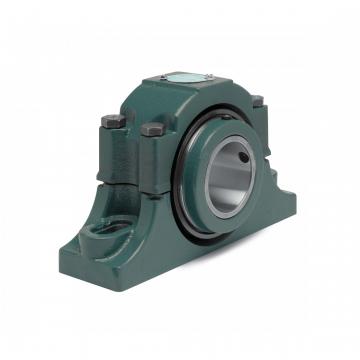 Mounted Tapered Roller Bearings P4B-EXL-212RE
Mounted Tapered Roller Bearings P4B-EXL-212RE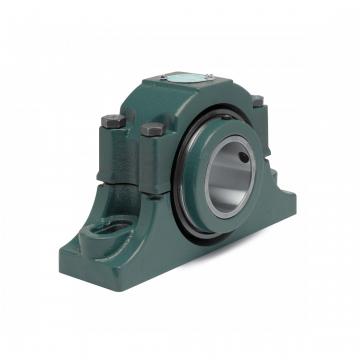 Mounted Tapered Roller Bearings P4B-EXL-400R
Mounted Tapered Roller Bearings P4B-EXL-400R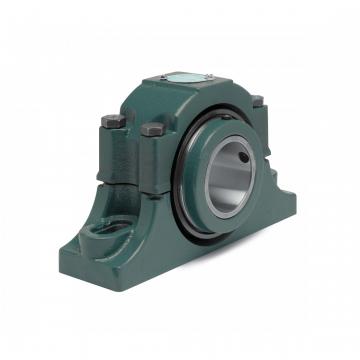 Mounted Tapered Roller Bearings P4B-EXL-400RE
Mounted Tapered Roller Bearings P4B-EXL-400RE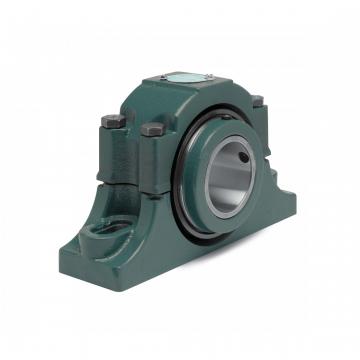 Mounted Tapered Roller Bearings P4B-EXL-315RE
Mounted Tapered Roller Bearings P4B-EXL-315RE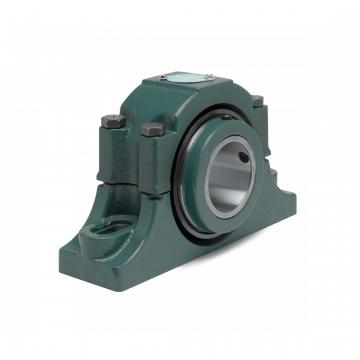 Mounted Tapered Roller Bearings P4B-EXL-207RE
Mounted Tapered Roller Bearings P4B-EXL-207RE